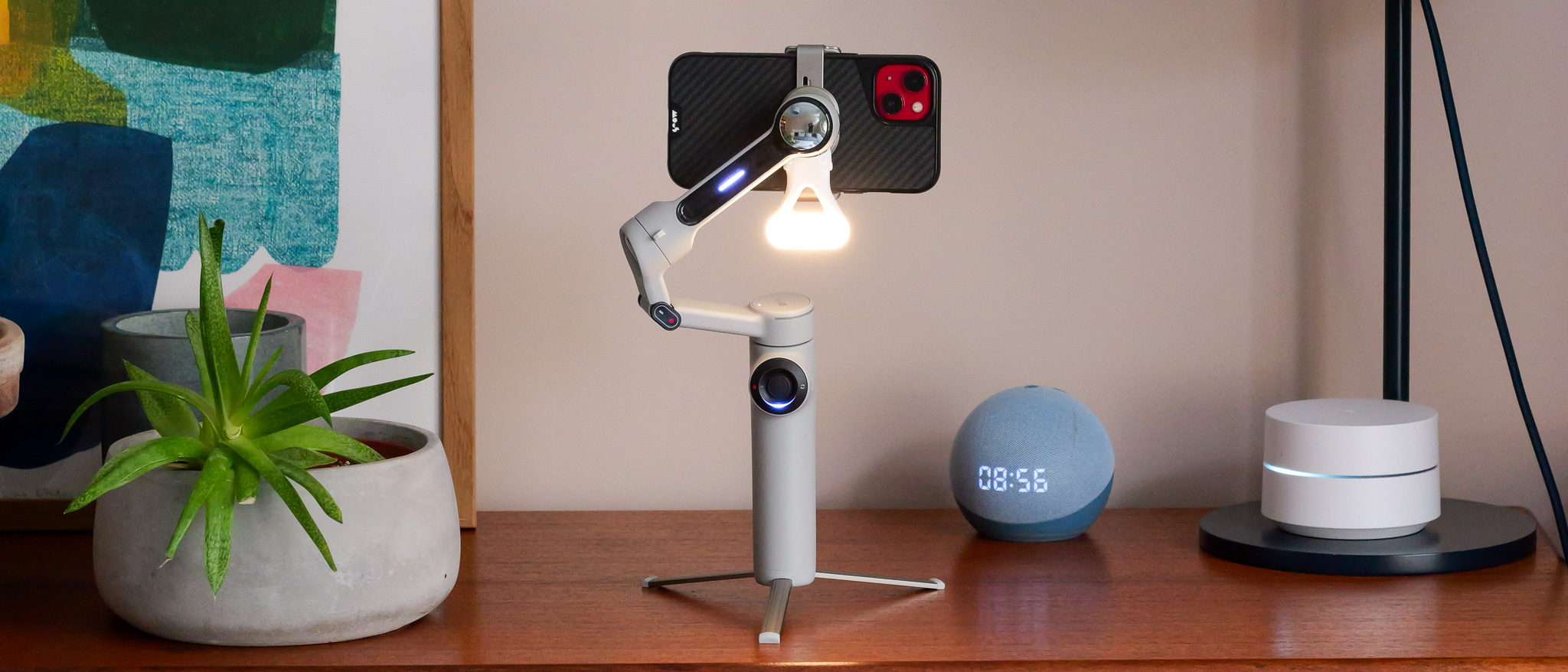TechRadar Verdict
While I wouldn’t suggest buyers of the original Flow Pro chuck out their gimbal in favor of this model, the Insta360 Flow 2 Pro does represent an upgrade on what was already one of the best small, folding phone stabilizers on the market. With a sturdier, more ergonomic build, more tracking options and more flexible stabilization courtesy of its Free Tilt Mode, this establishes itself firmly as the best small, folding gimbal for iPhone users, and a pretty good option for Android users too.
Pros
- +
Compact, sturdy and quick-deploy design
- +
Simple, effective gimbal stabilization
- +
Tracking supported for hundreds of iPhone apps
Cons
- -
Few new features to impress Android users
- -
Hard carry case sold separately
Why you can trust TechRadar
Insta360 Flow 2 Pro: Two-Minute Review
Not even a year since Insta360’s original Flow Pro smartphone stabilizer arrived on the market, and it already has a successor in the shape of the Flow 2 Pro. The new gimbal (perhaps unsurprisingly given the timeframe) doesn’t represent a huge leap forward, however – merely a logical progression in a few key areas.
This is another compact handheld gimbal for keeping an attached smartphone level and its movements smooth, enabling the user to capture more stable and professional-looking video footage while on foot or, with the gimbal perched on a flat surface thanks to its integrated tripod, use their phone like an automated camera operator, moving around while the gimbal uses its software to track and follow their movements, keeping them in the frame.
All the key advantages of the original model either remain untouched or improved upon, thankfully. The lightweight folding design, for instance, makes the Flow 2 Pro one of the most portable smartphone stabilizers around, just like the Flow Pro. And, like the Flow Pro, it features a magnetic clamping system that makes mounting your phone and deploying the gimbal and a refreshingly quick and painless process. The clamp grips securely to the sides of your phone, accommodating devices between 64mm and 84mm wide, and then simply sticks to the gimbal arm via its strong magnet, fixing into place with a satisfying ‘thunk’.
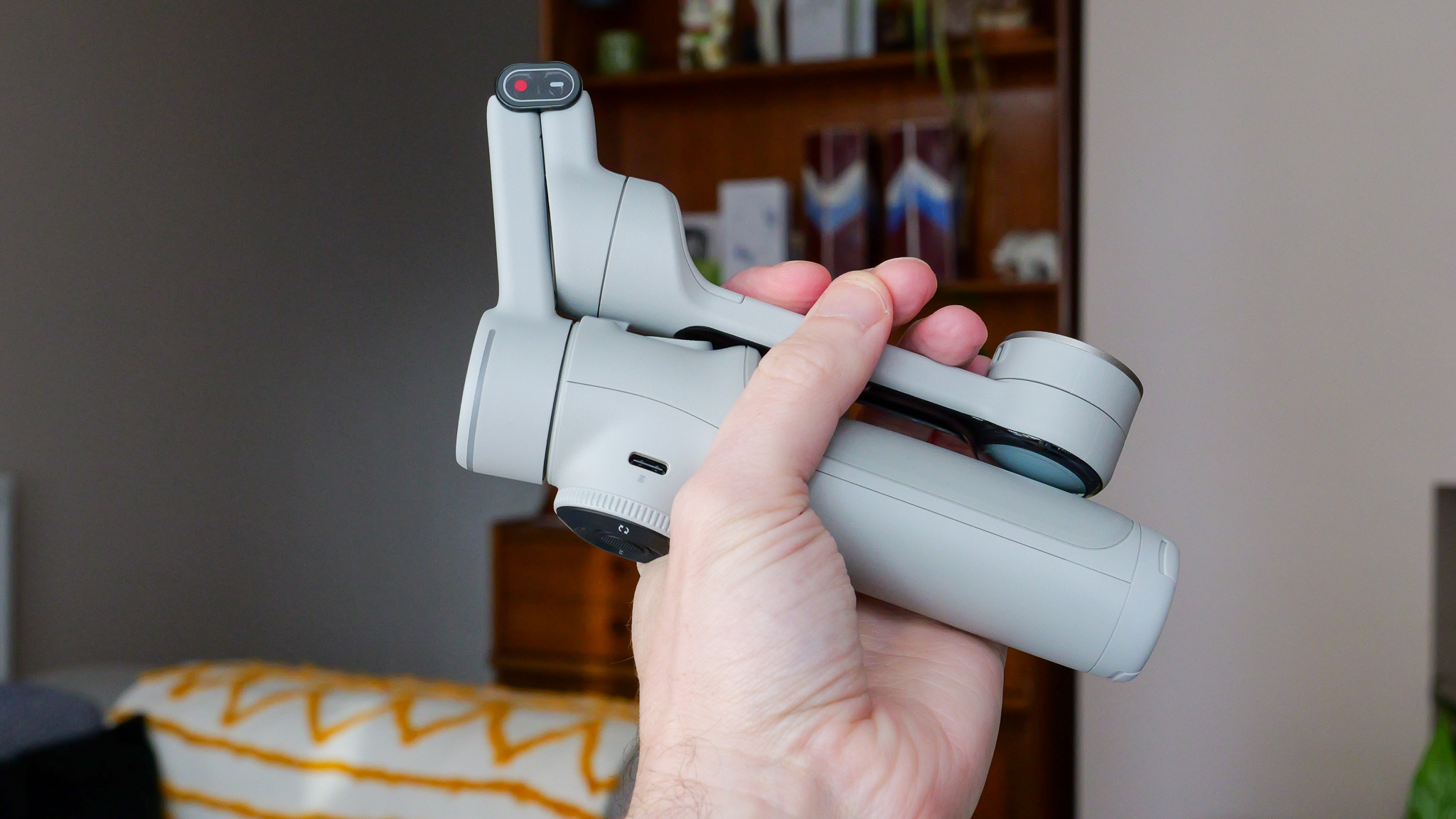
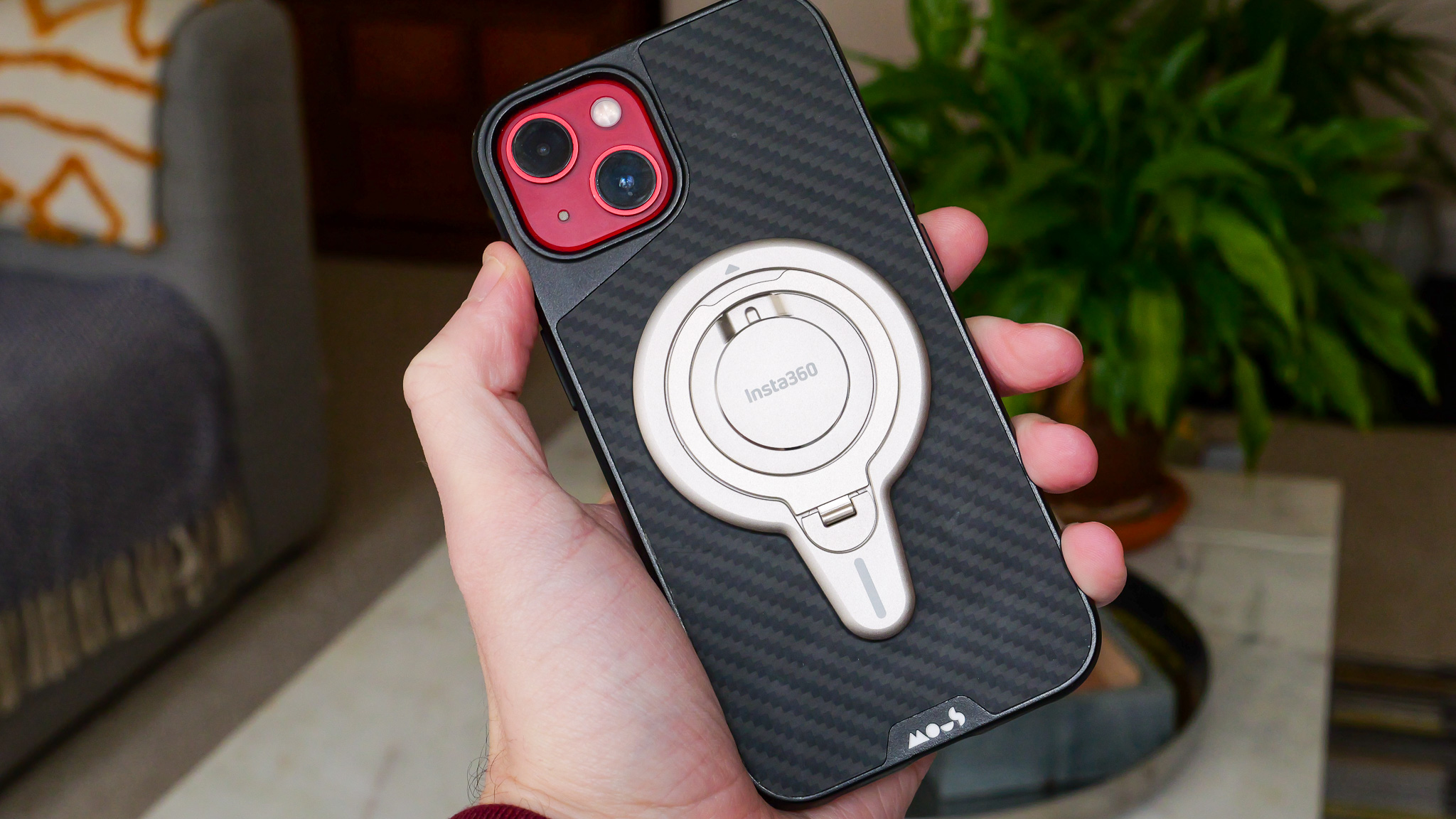
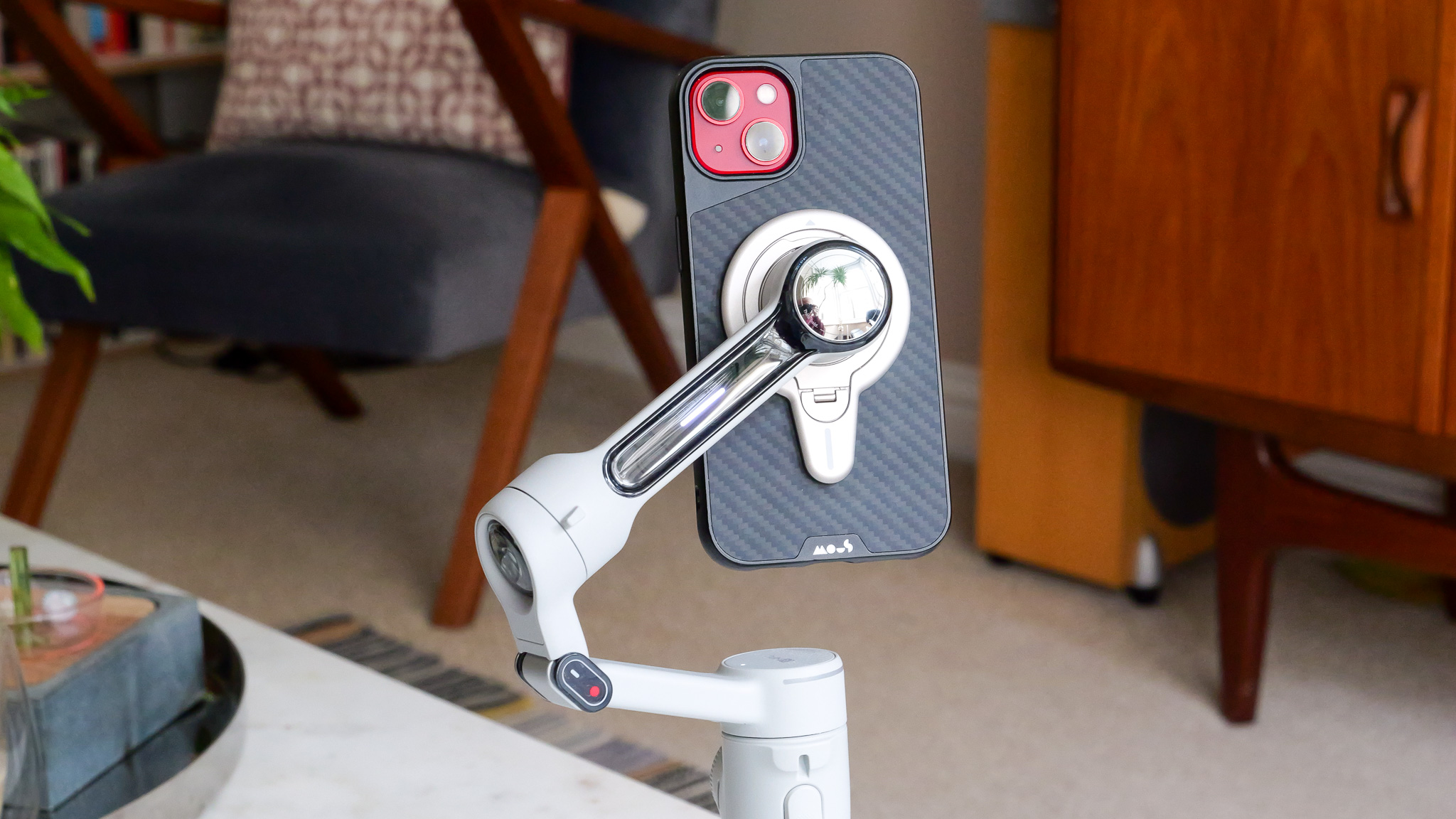
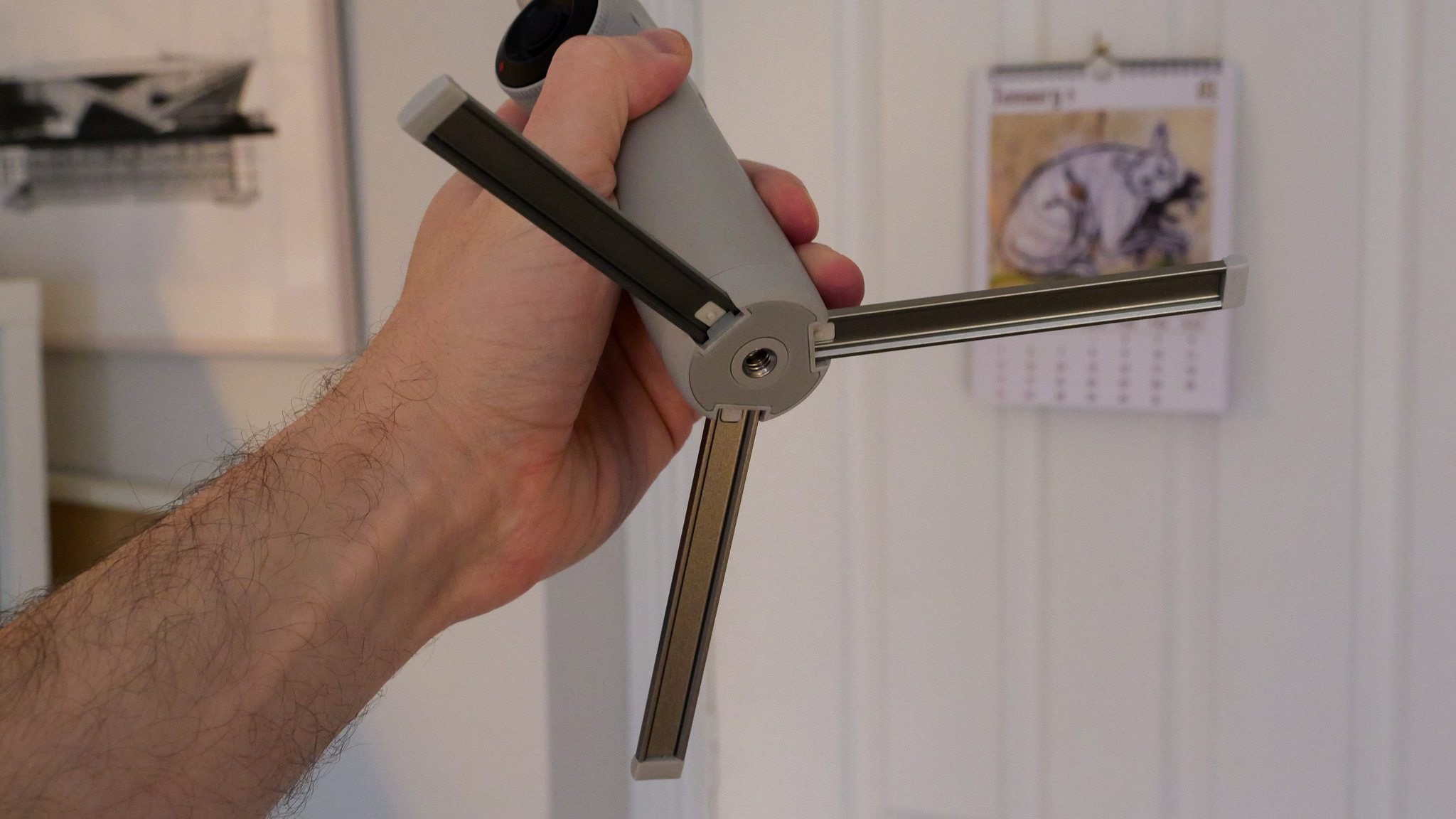
I think the design is even better this time around, though, because the Flow 2 Pro’s construction is tougher and more durable than that of its predecessor, even down to the built-in tripod legs being less awkward to pull out and providing a more stable platform for hands-free stabilization.
In its folded state the Flow 2 Pro is impressively small. I was even able to lug it around in my coat pocket, which isn’t something I could say for many of the other best smartphone gimbals. The basic bundle comes with a soft cloth drawstring bag for storage in such situations, but Insta360 also sells an optional hard-sided carry case with snug cut-outs for the gimbal, magnetic clamp and (also optional) fill light. This case, which comes with a removable shoulder strap and netted compartment space inside the lid for storing cables and other small accessories, is the ideal way to store the Flow 2 Pro when not in use, and I’d have liked it included in the basic package – but I suppose keeping it as an optional upgrade does hold the overall cost down for those who want to get in at the lowest price point.
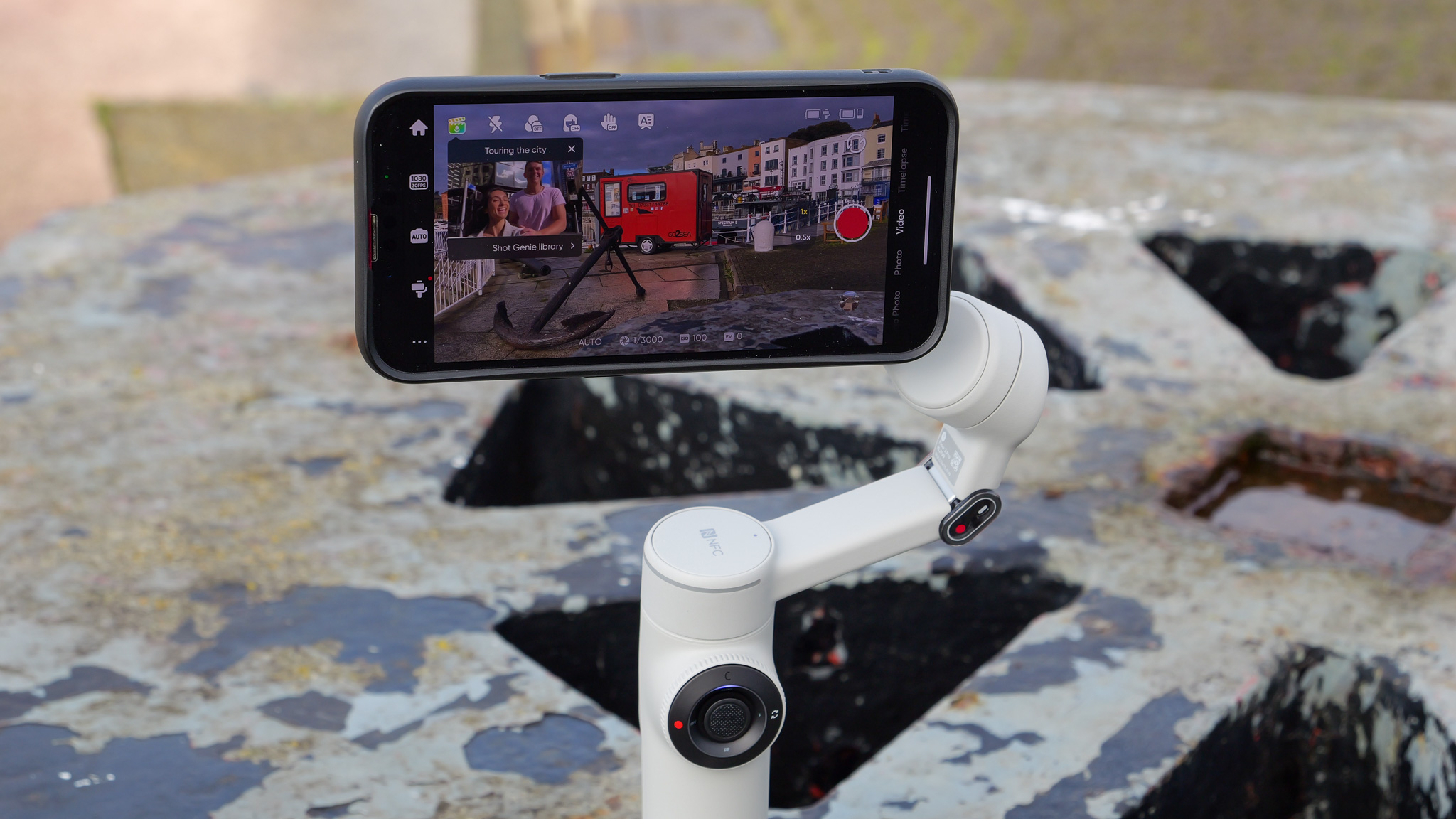
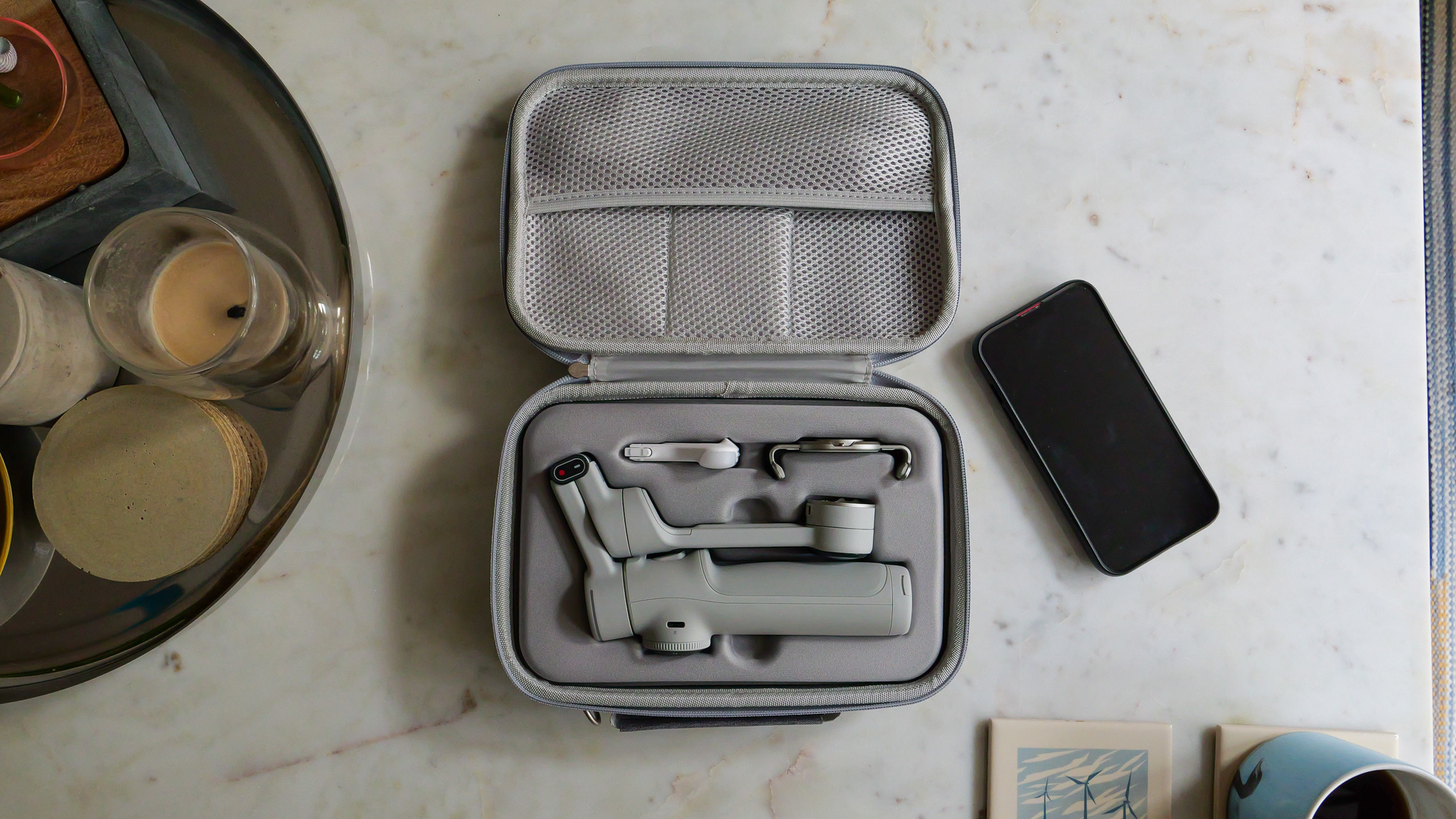
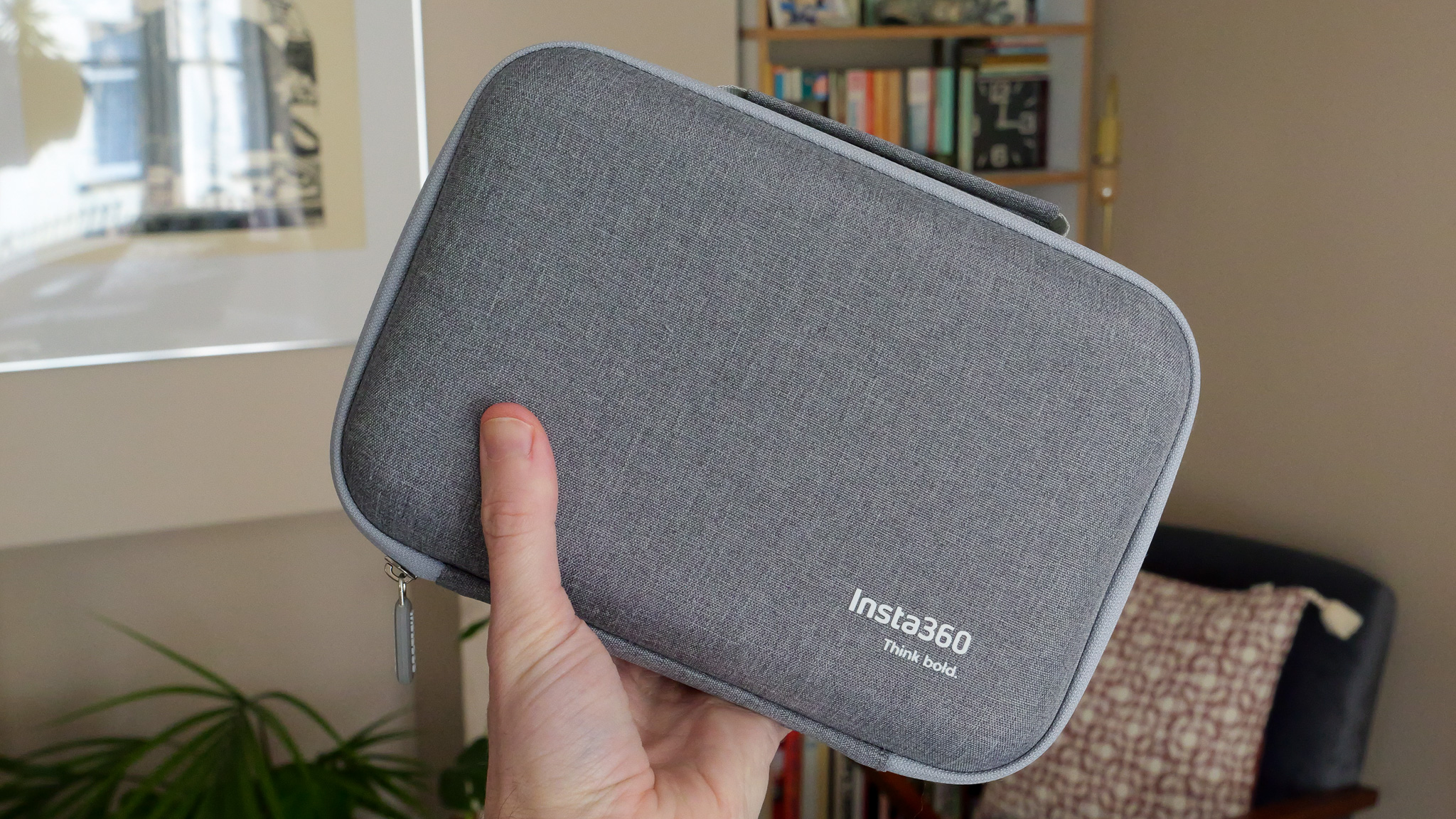
As for the smartphone stabilization itself, I have no significant complaints at all – it all works brilliantly, and the Flow 2 Pro feels much more comfortable in my hand than the original Flow Pro. The three-axis gimbal can support handsets up to 300g in weight, stabilizing them using one of three modes: Follow (which follows both the pan and tilt movements of the user but keeps the roll axis fixed); Pan Follow (similar, but keeps both the tilt and roll axes fixed); and FPV (which follows the user’s movement on all three axes).
There’s also an Auto mode, which follows tilt and pan movements and adapts its sensitivity automatically in real-time, plus the option to fix all axes in place at any time by holding down the trigger on the handle. The sixth and final mode is Active Plus, which adds extra sensitivity and responsiveness to the above modes and is engaged by tapping, then holding down the trigger.
You can also manually move the gimbal using the on-handle controls, with the thumb stick supporting tilt and pan motion and, in FPV mode, the jog wheel controlling roll axis movement. Single tapping the trigger turns subject tracking on and off, double tapping resets the phone to a level central position and triple tapping spins the phone through 180º so that it faces the opposite direction to its current facing.
The minimalist circular control setup is similar to the Flow Pro’s, albeit with a few tweaks to aid ergonomics. It’s now slightly more tactile and the four mode lights for Auto, Follow, Pan Follow and FPV are situated at 12, 3, 6 and 9 o’clock on the circle rather than in a row at the top. The green indicator light, which pops on to tell you that tracking is in progress, is retained from the Flow Pro, as is the NFC tap point above it, which can be used for first-time one-tap pairing for both Android and Apple phones.
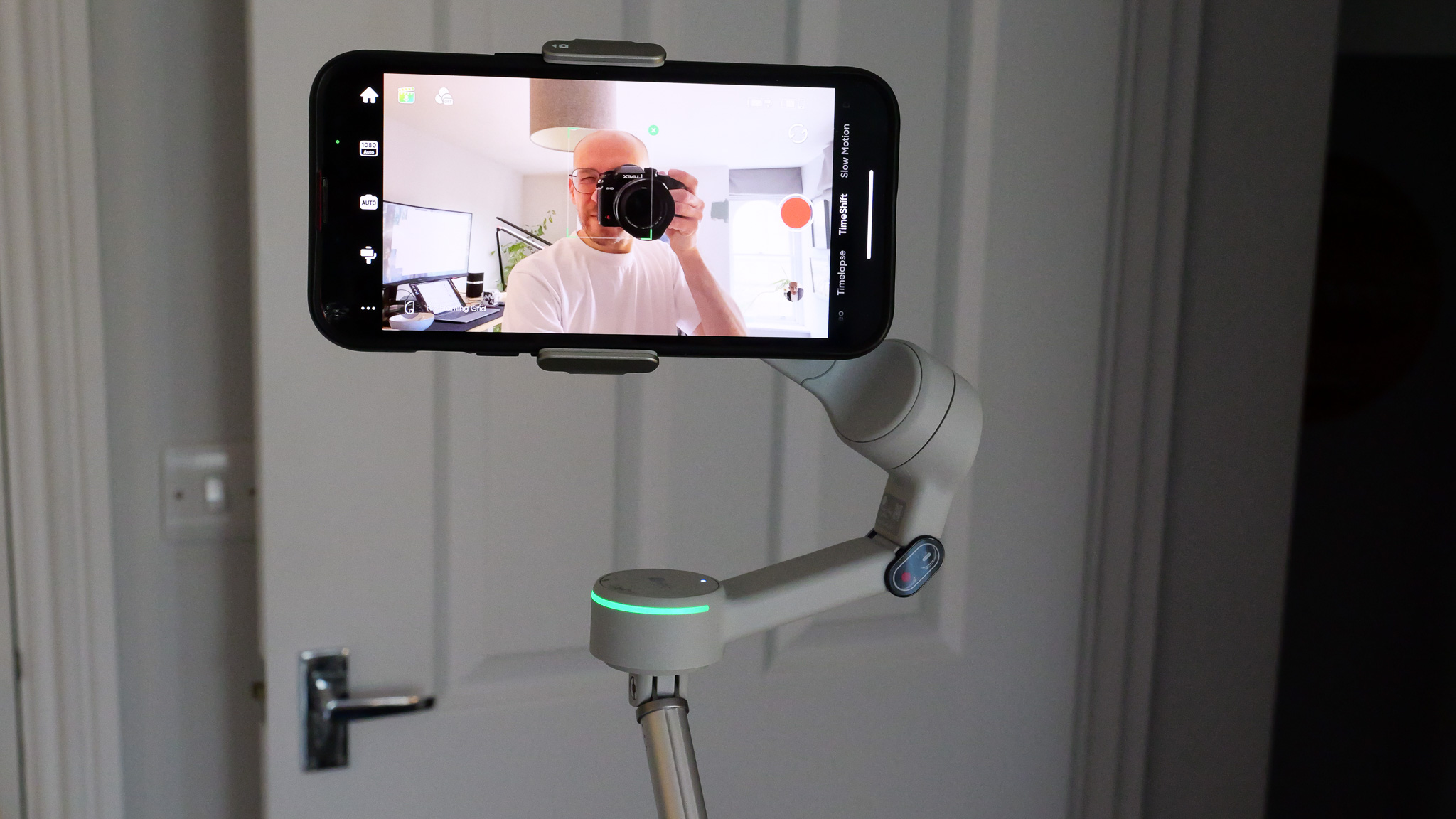
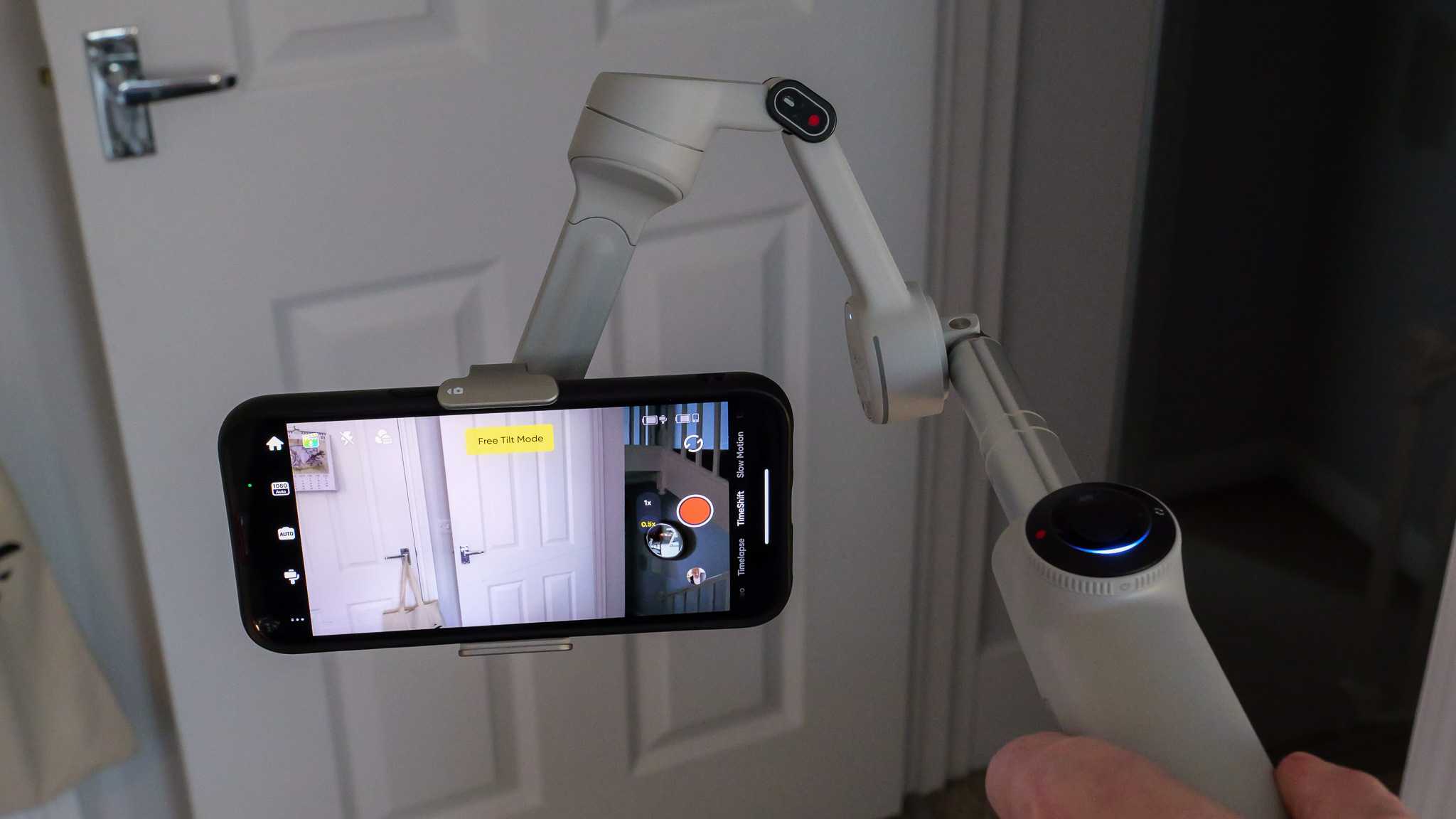

The 21cm extension stick, which expands out from the handle to create extra distance between the user and the phone, is retained from the previous model but a new Free Tilt option expands the Flow 2 Pro’s repertoire of motion. It moves the arm out of the way, which allowed me to capture upwards and downwards tilting shots I wouldn’t otherwise have been able to get.
On the software side of things, the Flow 2 Pro retains its Apple DockKit support, which means it can track subjects in over 200 iPhone camera apps, including the likes of BlackMagic Camera, TikTok and the iPhone’s own native camera app. Obviously this leaves Android users feeling a little short-changed in comparison, as the only way they can track on the Flow 2 Pro is via the Insta360 app.
However, the app is great – and I think delivers by far a smoother, smarter and more responsive tracking experience than any apps that use the DockKit integration. New tracking features added for the Flow 2 Pro include the ability to track groups of people, track while zoomed up to 15x and the Pro Framing Grid, which can modify tracking to keep the subject off-center in the frame for a more pleasing ‘golden ratio’ composition.
The app also includes support for Dolby Vision and Apple ProRes video recording, a new teleprompter option to help content creators stick to the script and support for remote control of the gimbal via a second smartphone or an Apple Watch. I like the idea of a remote control but having to pull out a second smartphone isn’t really ideal – so hopefully Insta360 will take inspiration from the Hohem iSteady M7’s integrated remote control for future stabilizers.
I did get the opportunity to try out a couple of the optional accessories such as the MagSafe mount, which is a much more elegant and slick mounting option than the spring-loaded magnetic grip and the LED fill light, which slots directly onto the gimbal arm’s USB-C output (which can also be used to top up your phone’s battery) and provides either warm, neutral or cool light in one of three intensities. It’s not as flexible as the LED that comes included on the Hohem M7, but it’s powerful enough to enable night-time vlogging, and can face both forwards and backwards.
With up to 10 hours of battery life, the Flow 2 Pro delivers roughly the same amount of use on a full charge as the original model. By the standards of small stabilizers, it’s good – and significantly longer than the 6.5 hours offered by the DJI Osmo 6 Mobile, its closest rival.
Insta360 Flow 2 Pro: Price and Availability
The Insta360 Flow 2 Pro is available to order from its launch day, 16 January 2025, in two bundles and two color finishes: Stone Grey and Summit White.
The Standard Bundle costs $159.99 / £144.99 / AU$239.99, and includes the Flow 2 Pro itself plus a magnetic clamp, USB-A to USB-C charging cable and soft storage back. The Creator Bundle costs $189.99 / £169.99 / AU$289.99, and includes all of the above plus a USB-C to USB-C charging cable, a magnetic phone mount for MagSafe iPhones and the Spotlight, a small fill light that clips directly to the gimbal arm.
This launch price is slightly higher than the launch price of original Flow Pro (which arrived in July 2024); taking into account inflation, however, I’d consider it roughly the same – although I would expect the original Flow Pro to fall in price now that its successor has arrived – the Flow 2 Pro’s most established rival, the DJI Osmo 6 Mobile, has already.
Insta360 Flow 2 Pro: specs
| Dimensions: | 97.9 x 178.4 x 36.7mm (folded) |
| Weight: | 357g (382g inc. magnetic clamp) |
| Compatible phone weight: | 130 to 300g |
| Compatible phone thickness: | 6.9 to 10mm |
| Compatible phone width: | 64 to 84mm |
| Connectivity: | Bluetooth 5.0, USB-C |
| Battery life: | Approx 10 hours |
Insta360 Flow 2 Pro: Also Consider
DJI Osmo Mobile 6
We think DJI’s small folding gimbal feels nicer in the hand than the Flow 2 Pro, but in other areas the Insta360 has it beat thanks to longer battery life and, for Apple users at least, that all-important ability to track using third-party camera apps. We’d expect the upcoming Osmo Mobile 7 (or equivalent) to up its game sharply, however.
Read our DJI Osmo Mobile 6 review
Hohem iSteady M7
While significantly pricier and bulkier than the Flow 2 Pro, the M7’s impeccable stabilization can balance phones up to 500g in weight. Even better, it comes with app-agnostic tracking via an AI camera module that doubles as a fully customizable fill light, plus a touchscreen module that works as a remote control.
*Our Hohem iSteady M7 review is in progress
Should I buy the Insta360 Flow 2 Pro?
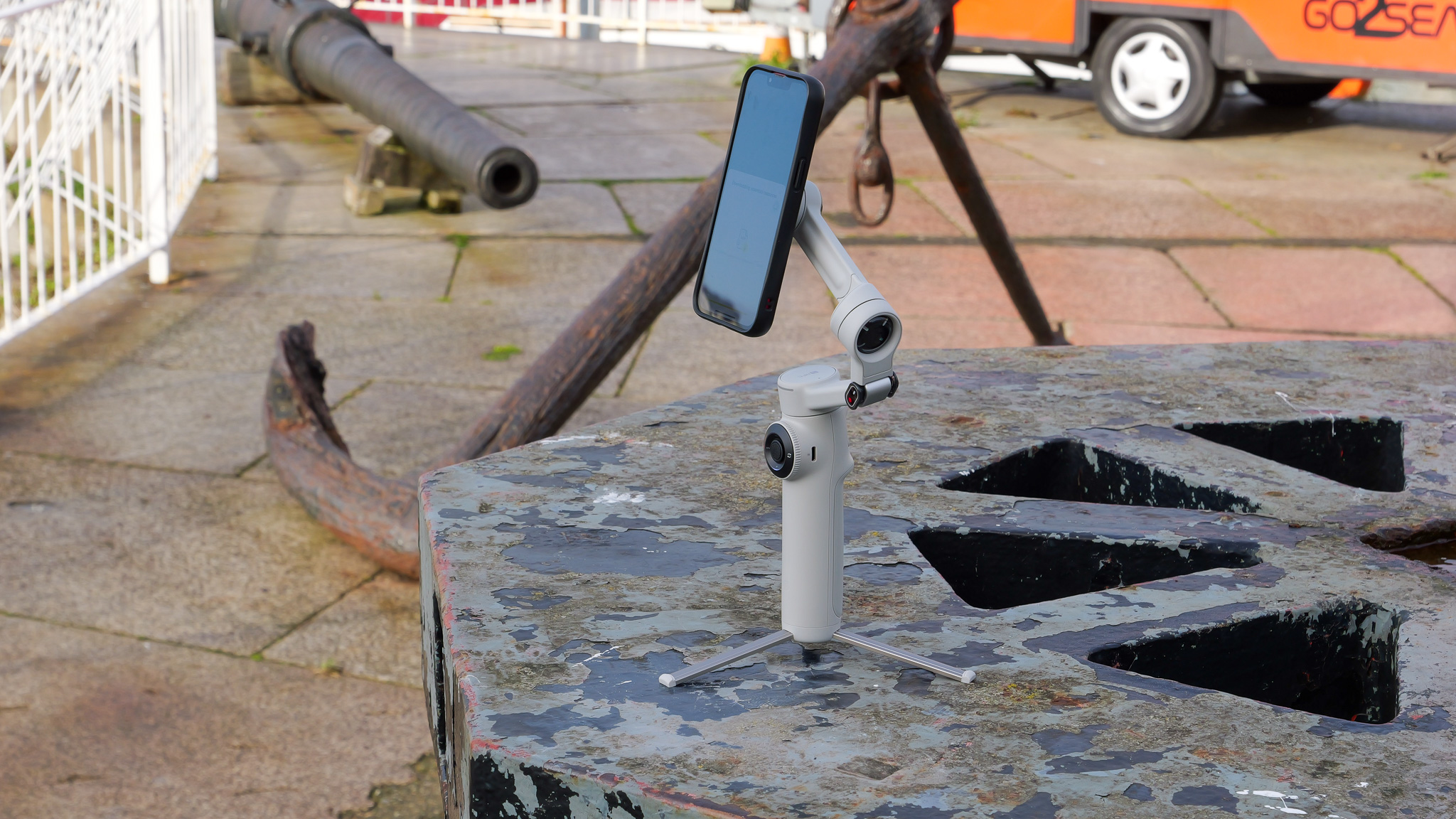
Buy it if...
You want the best small gimbal for iPhone
The Flow 2 Pro’s Apple DockKit support grants it far more utility for iPhone users than its folding, compact competitors, allowing human subject tracking for over 200 iOS camera apps.
You travel light
With its folding, lightweight build, which also manages to be reassuringly sturdy, the Flow 2 Pro is the perfect stabilizer with which to document your day trips and weekend breaks. It works as a power bank, selfie stick and tripod too!
Don't buy it if...
You want the best all-round tracking gimbal
Larger, pricier stabilizers like the Hohem iSteady M7 and Zhiyun Smooth 5A AI feature AI tracking modules that allow them to track human subjects with any app for both Android and iPhone.
You already own the original Flow Pro
The improvements here are notable, but not so valuable that it’s worth ditching your nearly new Flow Pro for the upgrade. If you own the original, our advice would be to wait until the Flow 3 Pro (or equivalent) comes along.
How I tested the Insta360 Flow 2 Pro
- One week of use
- Tested with iPhone 13 and various iOS apps
- Used inside and outdoors both on tripod and in hand
I used the Insta360 Flow 2 Pro in and around my home for a week, using it to record footage both on the move and with it fixed it place via its built-in tripod. I tested it with my Apple iPhone 13 and a variety of camera apps – including the Insta360 app, BlackMagic Camera and the iPhone’s own native camera – to record b-roll and vlog-style videos.
First reviewed January 2025
Sam has been writing about tech and digital culture for over 20 years, starting off in video games journalism before branching out into the wonderful worlds of consumer electronics, streaming entertainment and photography. Over the years he has written for Wired, Stuff, GQ, T3, Trusted Reviews and PC Zone, and now lives on the Kent coast in the UK – the ideal place for a camera reviewer to ply their trade.
You must confirm your public display name before commenting
Please logout and then login again, you will then be prompted to enter your display name.
